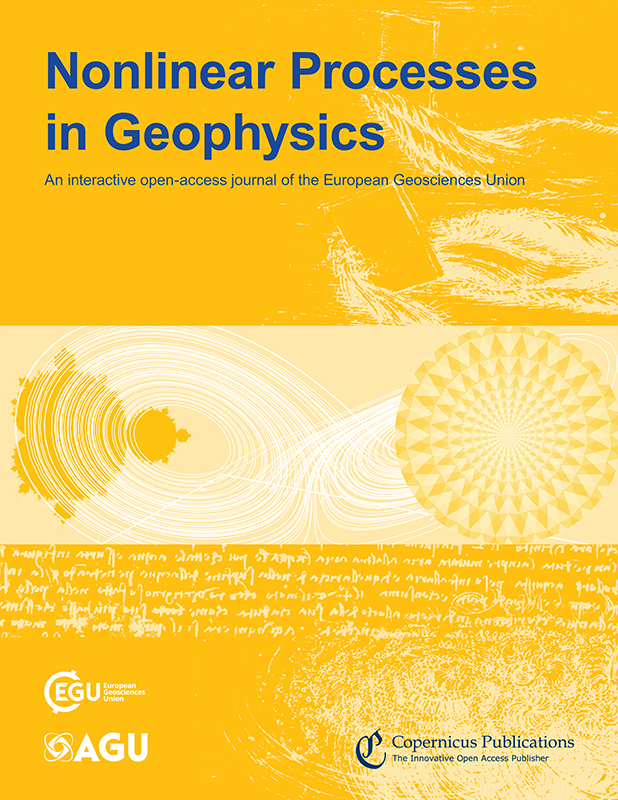Multifractal structure and Gutenberg–Richter parameter associated with volcanic emissions of high energy in Colima, Mexico (years 2013–2015)

Marisol Monterrubio-Velasco, Xavier Lana, and Raúl Arámbula-Mendoza
Nonlinear Processes in Geophysics
https://doi.org/10.5194/npg-31-449-2024
The evolution of multifractal structures in various physical processes, such as climatology, seismology, or volcanology, serves as a crucial tool for detecting changes in corresponding phenomena. In this study, we explore the evolution of the multifractal structure of volcanic emissions with varying energy levels (observed at Colima, Mexico, during the years 2013–2015) to identify clear indicators of imminent high-energy emissions nearing 8.0×108 J. These indicators manifest through the evolution of six multifractal parameters: the central Hölder exponent (α0); the maximum and minimum Hölder exponents (αmax, αmin); the multifractal amplitude (); the multifractal asymmetry (); and the complexity index (CI), calculated as the sum of the normalized values of α0, W, and γ. Additionally, the results obtained from adapting the Gutenberg–Richter seismic law to volcanic energy emissions, along with the corresponding skewness and standard deviation of the volcanic emission data, further support the findings obtained through multifractal analysis. These results, derived from multifractal structure analysis, adaptation of the Gutenberg–Richter law to volcanic emissions, and basic statistical parameters, hold significant relevance in anticipating potential volcanic episodes of high energy. Such anticipation can be further quantified using an appropriate forecasting algorithm.


